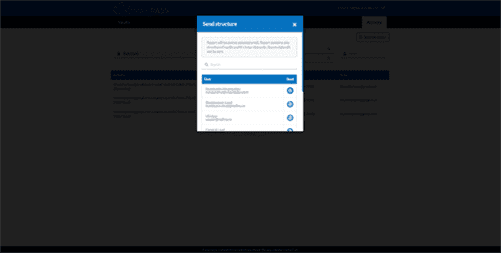Consider where you could make improvements and what type of improvements you should be making. You want to make sure that you’re on top of all the different steps.Making changes and updating your process should make you more effective and more efficient. You might even come up with entirely different best practices that you want to put in place.
This article will share a comprehensive list of best practices for project management every organization needs. Project managers play a vital role in orchestrating the environment, team, tools, platforms, meetings, and documentation necessary for a project’s successful delivery. Although they may not directly produce deliverables, they ensure that all aspects of the project run smoothly and effectively. Junior PMs often work with experienced mentors who help them stay on track and make necessary corrections.
Ensure transparency in the project
As the project progresses, it’s important to track the progress of each task. This will help to ensure that the project is completed efficiently and effectively. It’s also important to remember that the project plan is not set in stone. Once you know what your goal is, you need to create a plan for how you’re going to achieve it. With a Work OS, you can create, share, and collaborate on documents from within your workflow—or larger workspace. For example, with monday workdocs, team members can explore and understand in real-time the flow of a project and their part.
Whether you’re an experienced project manager or a newcomer, managing projects can be challenging. Learning from your past to improve yourself is perhaps the oldest trick in the book and great managers always insist on making this project management practice mandatory. 5 best practices for managing large it projects Have a meeting where all members discuss the shortcomings of the project and the project management strategies they must implement to overcome them. As a project manager, it’s easy to put off housekeeping tasks and focus instead on putting out fires.
Create your roadmap and high-level project plan
This guide also includes software recommendations and project risk examples you need to stay on the lookout for. Project risk management is a helpful process of steps that entails a lot of analysis and preparation that can’t be fit into a short tip sheet. That means it’s extremely important to do all that you can to prepare for the worst and hope for the best by managing your risks. Float gives you the tools you need to schedule projects, monitor team availability, and track workloads and budgets all in one place. Project management is a career where soft skills like communication, building trust, and managing expectations are vital for success. PMs often have a strong sense of intuition when things seem off, and they use this intuition to investigate and make decisions based on professional relationships.
- If they aren’t, the project manager may need to hire contractors at a high cost to the project – when some forewarning could have allowed HR to recruit and onboard more staff at a standard rate.
- While dealing with a project, you must keep track of these deviations and track all the processes to identify the deviations beforehand and figure out possible solutions before anyone else.
- It is important to be able to manage the project rigorously and proactively and to ensure that the project team and all stakeholders have a common understanding of how the project will be managed.
- We also have a great blog on top project management methodologies to further help you understand your options.
- After reviewing them, I realized most were duplicates, out of scope, or working as designed.
- This best practice reiterates the importance of strategic alignment with organizational objectives, as well as measuring PMO performance against them.
Use this Project Sponsorship Checklist to guide team discussions and clarify expectations. Write your project plan in terms of the goals and problems being addressed (and what isn’t) instead of just listing the tasks to be completed. Doing this will keep the focus on your work and protect against scope creep. The best project managers are great at balancing stakeholder engagement, preventing scope creep, mitigating risk, and upholding the principles of project management.
As long as you stay on top of your documents, project closure will be a breeze. Your project can have clear boundaries at the start, but those boundaries become quite fluid once you get into the execution phase. Failing to take early and decisive actions to address the variances of issues is often the reason why projects change too much and ultimately fail.

On the image below you’ll see the notes section available on the Project.co system. This can be used in whichever way suits your business, and can be edited by your whole team, at different stages of the project. Risks are inherent in every project, and if they’re not managed effectively, they can jeopardize the success of the entire endeavor. The in-house staff working on the project (especially experienced personnel), subcontractors, and the suppliers servicing the project should all communicate their deliverables’ expected timelines. If you need to manage your Asana projects in Instagantt, this is your product. These tendencies may never have been as helpful as people thought, or perhaps they don’t work as project work is changing and needs to be more nimble.

With views ranging from our Kanban Board, Gantt Chart, Timeline, and Calendar Views, you can customize the experience to your workflow and use color-coding to quickly understand project statuses. You can also seamlessly integrate monday.com with other tools in your tech stack, sharing boards, project status dashboards, and project updates with your entire team in real time. Nurturing effective communication with key stakeholders can boost support for your project. It ensures that your project remains on track by staying informed about requirements and any potential changes. By fostering good relationships it makes it a lot easier to deliver good, or bad news and to combat some of the common problems in project management. The People recommendations from the PMI focus on upskilling project managers.
This “why” is the purpose of the project, the project team, and their work. Its most important job, however, is to swing into action in case of emergencies. The team should have the experience and training necessary to save projects when mishaps happen.
